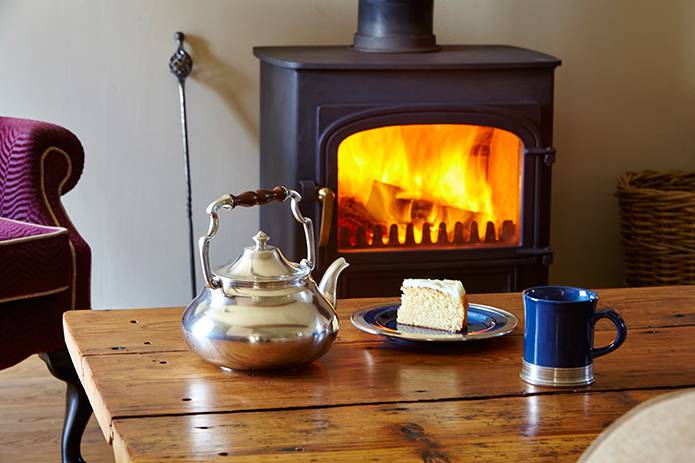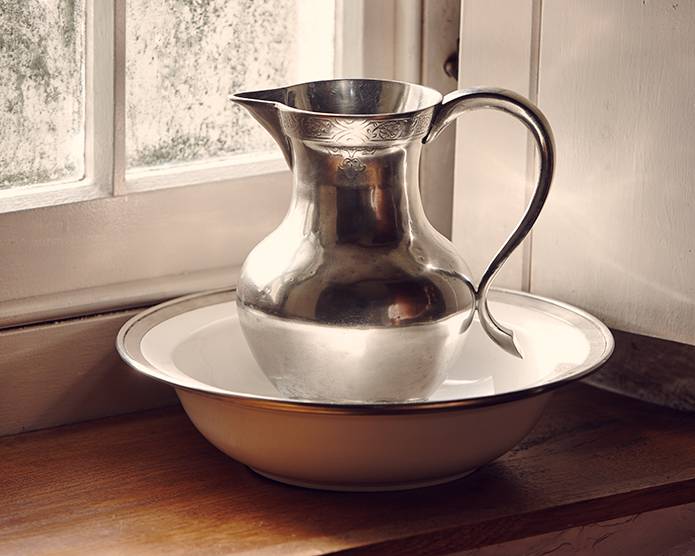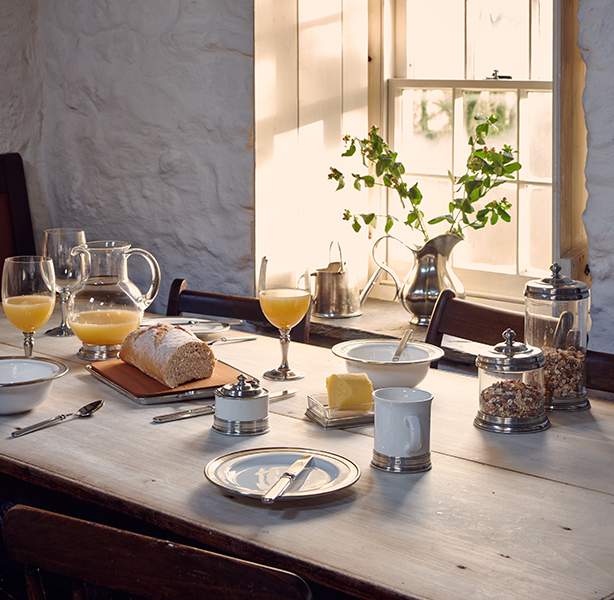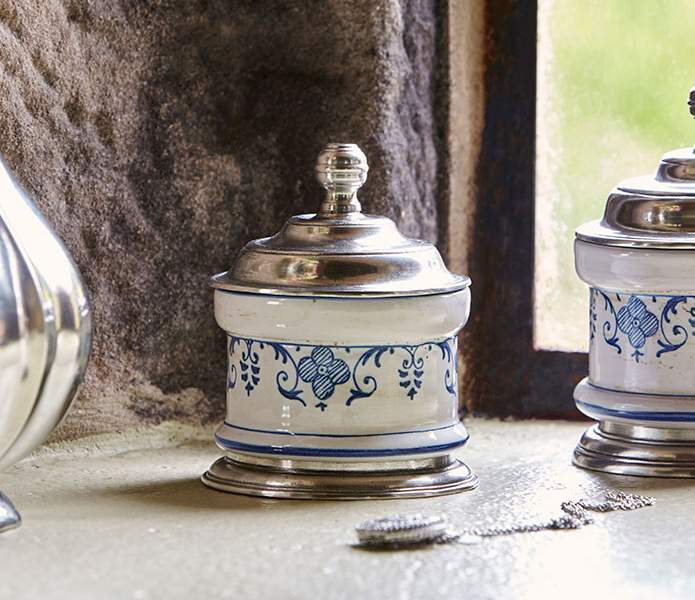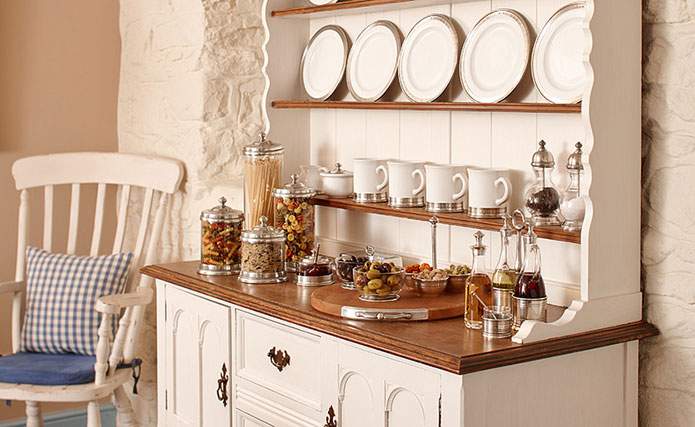
Charming ceramic in the dairy, The Farmhouse, A Corner of Eden, Cumbria
Ceramic, a compact, hard, durable and non-porous material, forms the basis of many designs that will add character and charm to an interior. From tiled floors and walls to feature pieces, ceramics can play an important role in our relationship with a space, impacting its liveability and versatility. Surfaces and objects made with ceramic are especially tactile: think about the sensuous pleasure of walking on a ceramic tiled floor on a warm summer’s day or enjoying coffee in your favourite mug on a cold winter’s afternoon.
Ceramic pieces are often those we enjoy a relationship with. Favoured ceramic tableware, storage vessels and ornamental objects are just some of the items whose value we have carefully considered and are personally invested in. These ceramics are a part of the everyday tools that we find essential in the home. It is not an overstatement to say that ceramics have a significant place in our lives, personally, emotionally, culturally, even historically and traditionally. Ceramics are amongst that cohort of wares likely to be passed through the generations and people’s use of ceramic as a versatile material is centuries-old.
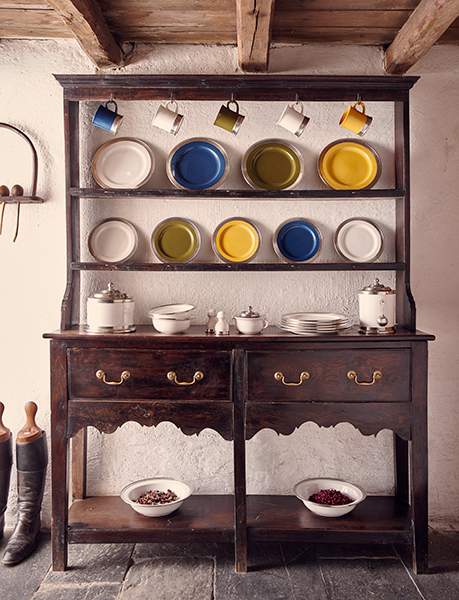
Ceramic storage & crockery displayed on a traditional welsh dresser, Bryn Eglur, The Welsh House, Carmarthenshire
London’s renowned Victoria and Albert Museum houses the most considerable and complete collection of ceramics in the world. The V&A prizes a veritable treasure trove of works from Asia, the Middle East and Europe in particular. Its A-Z of ceramic types is a helpful way in which to find out more about the ornate use of different ceramics in the home.
In ceramics, you will find designs that are simple and complex, affordable and expensive, utilitarian and elegant. From urban living to rustic country settings, ceramic objects are most at home on sideboards, dressers, cills and tables. A malleable material, ceramic pieces are often handmade and crafted.
As such any consequential imperfections, those in which ceramics are found to have dents or an asymmetric form, are quite often prized and indeed imbue the ceramic object with a beauty rarely found in mass-produced goods. In an excerpt from the book “Simple Home”, authors Mark & Sally Bailey note that in Japan “uneven, asymmetrical vessels have been seen as the correct accompaniment to the refined ritual of the tea ceremony.”
The Welsh dresser, also known as the kitchen dresser or pewter cupboard, is a rather traditional and functional piece of furniture. Typically comprised of drawers and cupboards in the lower half and shelving in the upper half, the Welsh dresser acts as a storage convenience for tableware and cutlery as well as a display case (for one’s finest crockery). In the 19th century, new styles of ceramics were created for the Welsh dresser, so catering to the demands of this market. The Welsh dresser along with similar or related contemporary designs, is today used mainly for the display of decorative ceramics and those pieces that rarely find a practical use. And it would seem there is an art form to attaining the dresser look, including a good mix of colours; choosing appropriate patterns; mixing shapes and accenting the dresser with personal elements.
TY UNNOS DRESSER 2
Of course ultimately ceramics are personal and whether they are bought for practical use or decorative purpose, they should reflect you, your style and your home.
Reference:
Bailey, M & S. (2009) Simple Home. London: Ryland, Peters & Small.






